Home Page.


TOOLS

CONTRIBUTIONS

Eleme is one of the largest food delivery platforms in China. Its retail business mainly covers home delivery services in categories such as supermarkets, flowers and aquatic products, and medical services. The data analysis module provides merchants with tracking of operations, traffic, services, products, promotions, markets, and customer-related data, and helps merchants formulate business strategies. User pain points are addressed through conducting various research methods. From that, comprehensive upgrades of all sections in this module are carried out and finally improve the CES score and reduce merchants' understanding effort and number of problem tickets received.
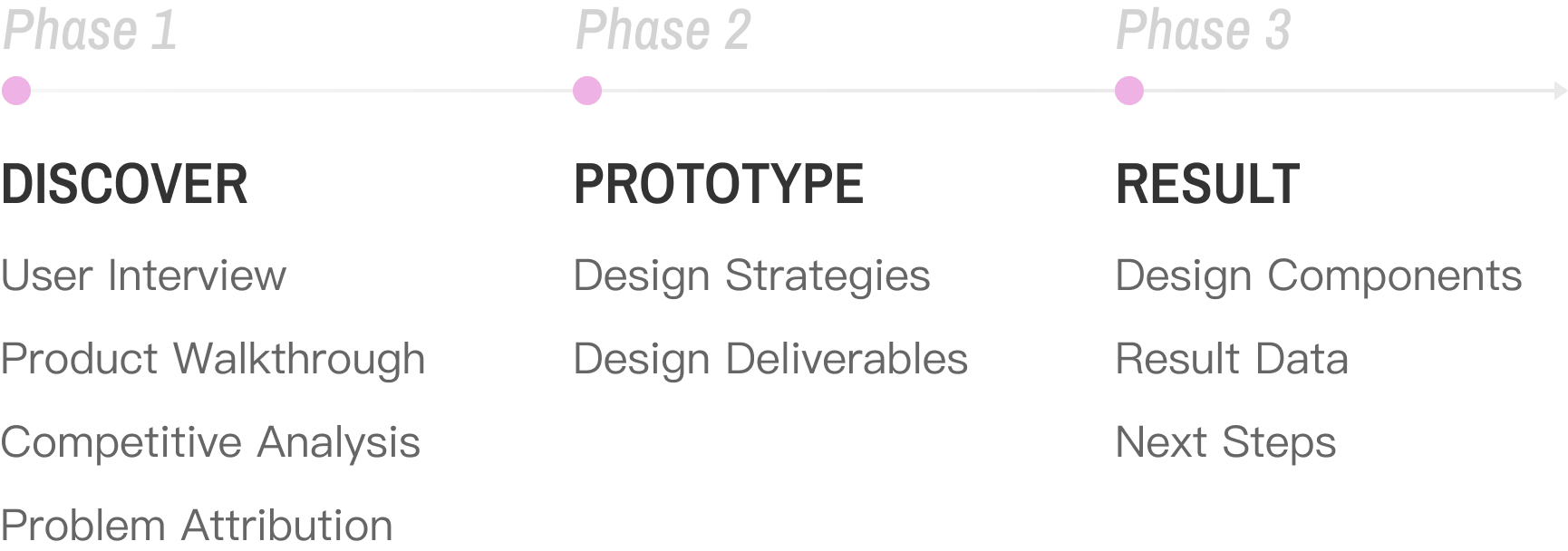
The data analysis module provides merchants with a channel to understand their own business conditions and surrounding market opportunities, helping merchants obtain better operating results, thereby indirectly increasing merchants' retention on the platform, and ultimately achieving improvement in platform reputation and business growth.
Because of the education background of target users is limited, an UX designer, in this case, plays a role in simplifying the skin of complex data, helping merchants understand and analyze data at low cost through design means, so as to maximize the matching between the product and user needs.
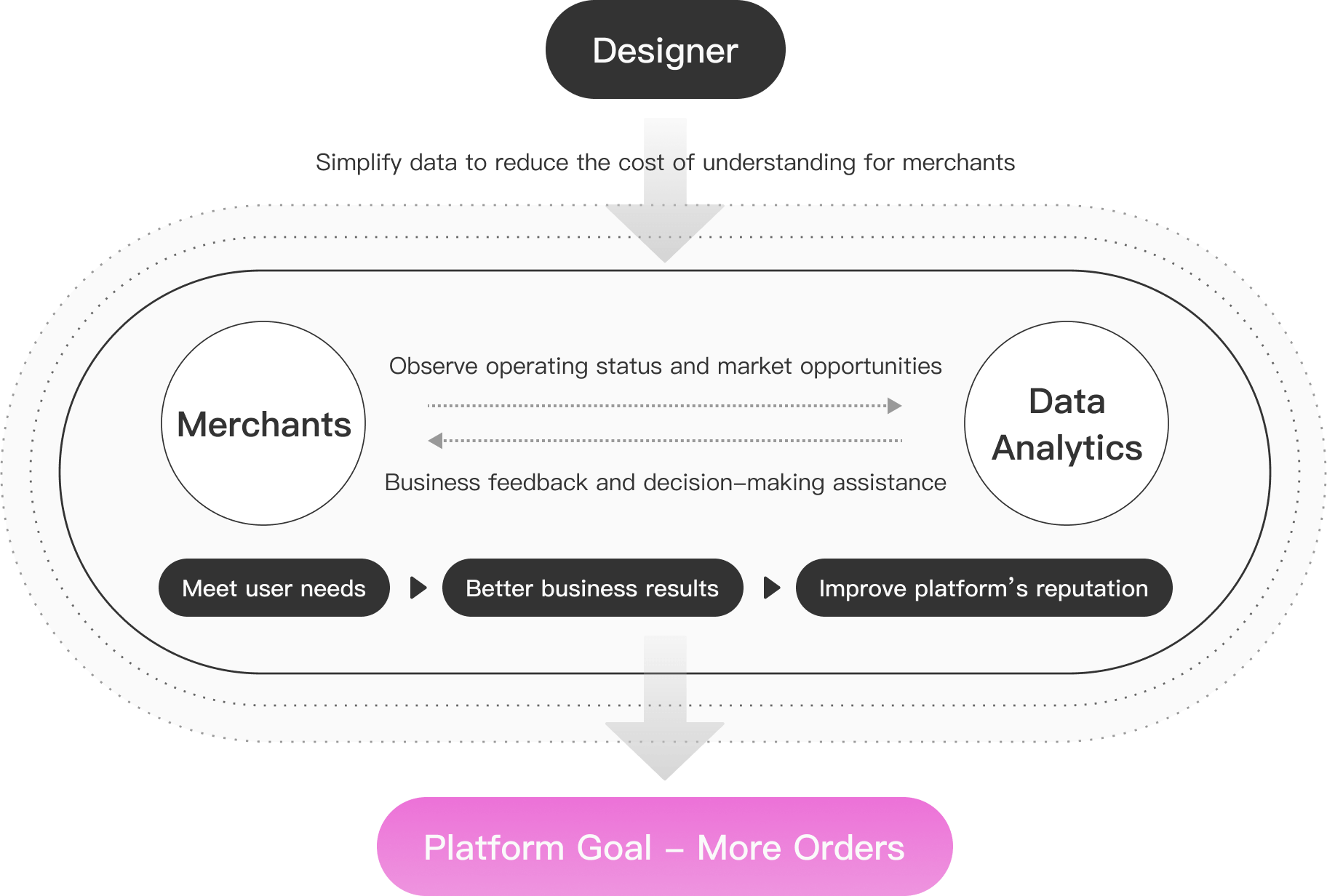
Taking the PC-side page as an example, there are overall problems such as lack of module functionalities, chaotic page layout, and lack of design consistency.
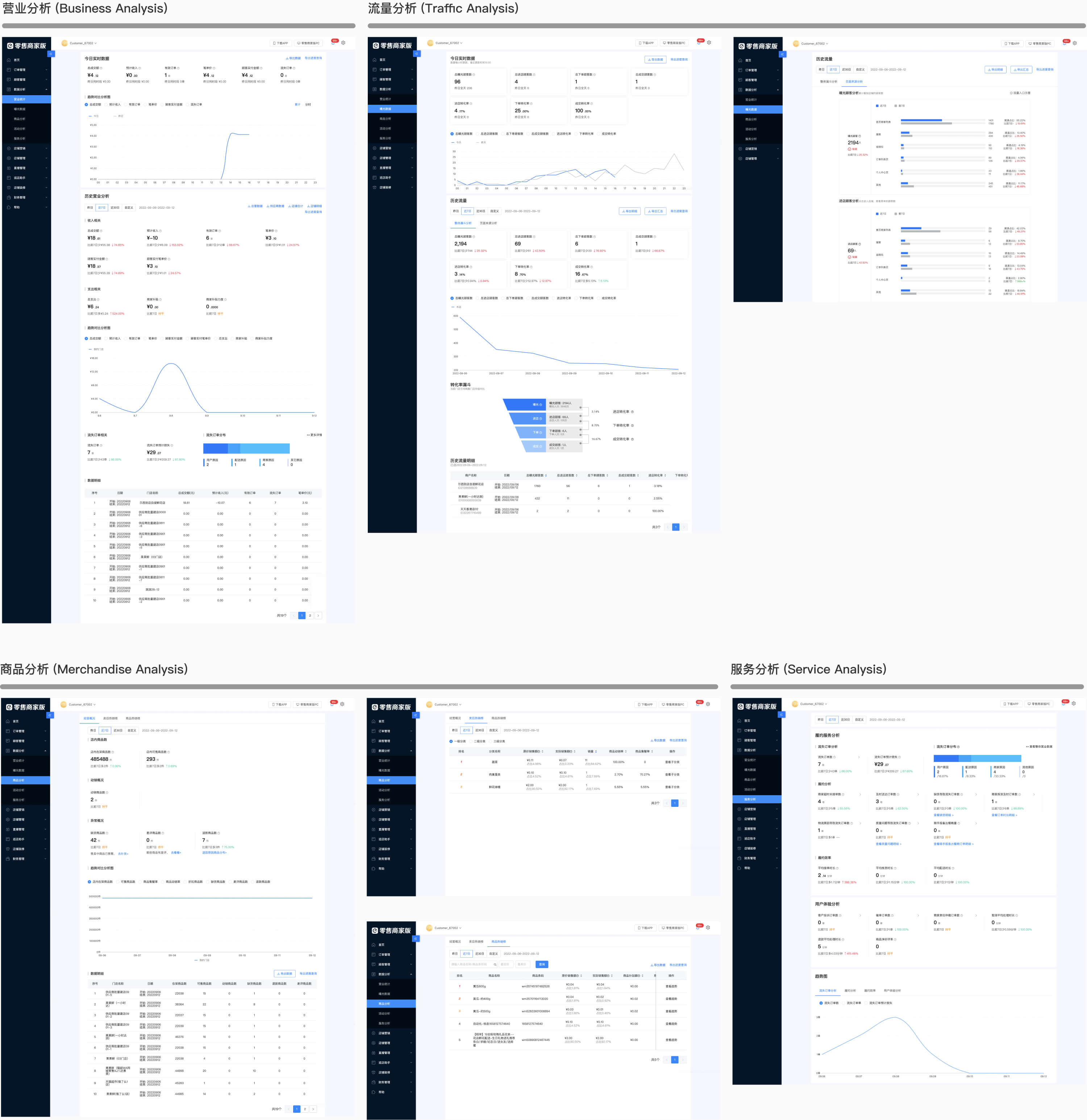
The overall idea is "Learn their background and business intention -> Learn their dependence on data analysis -> Learn their usage preferences and pain points -> Learn their data needs in each section".
I have interviewed 8 merchants, including 5 experienced and 3 novice ones (User stratification is from past data).
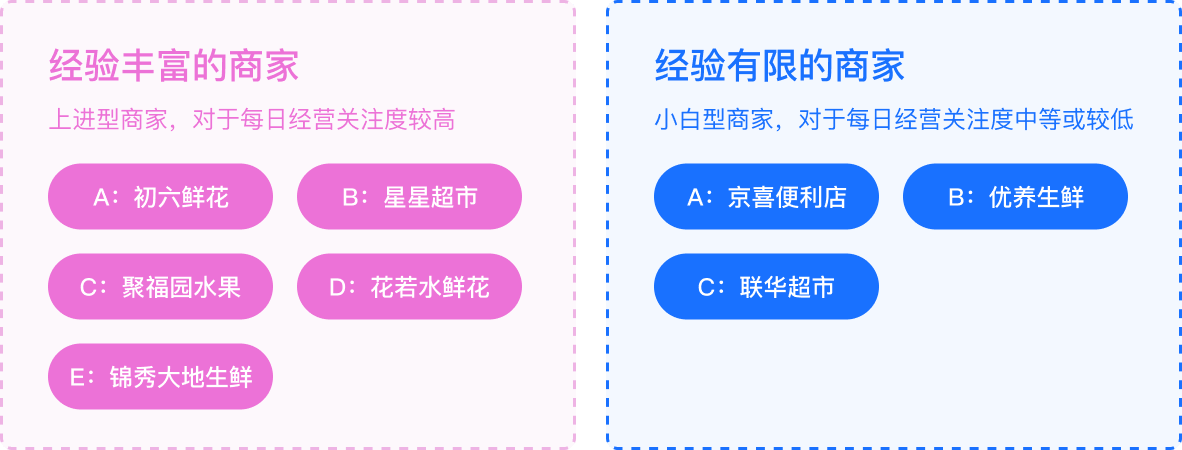
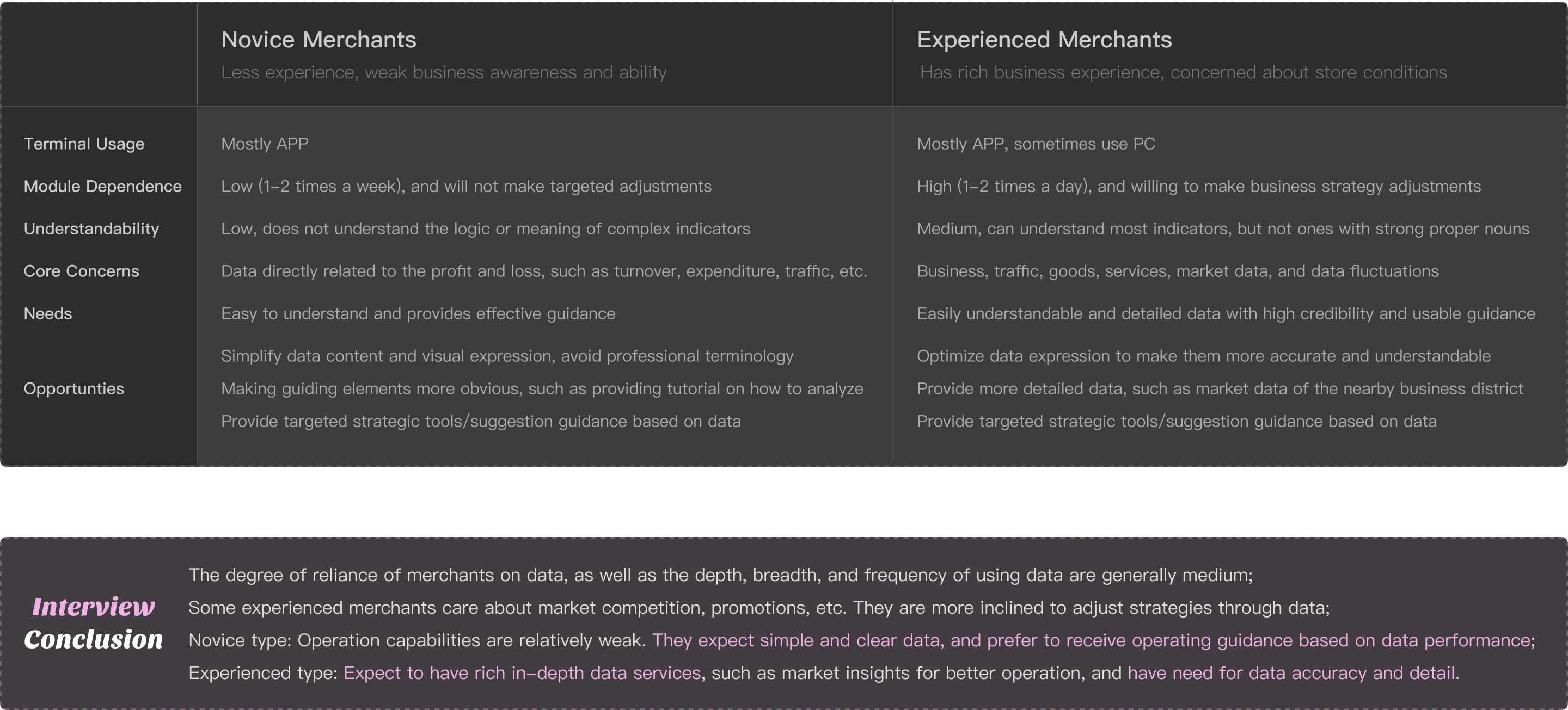
After walking through the data analysis module of both PC and APP, a total of 56 problems were found, of which 48.2% were ux-related problems, 28.6% were feature-related problems, and 23.2% were technical bug problems.
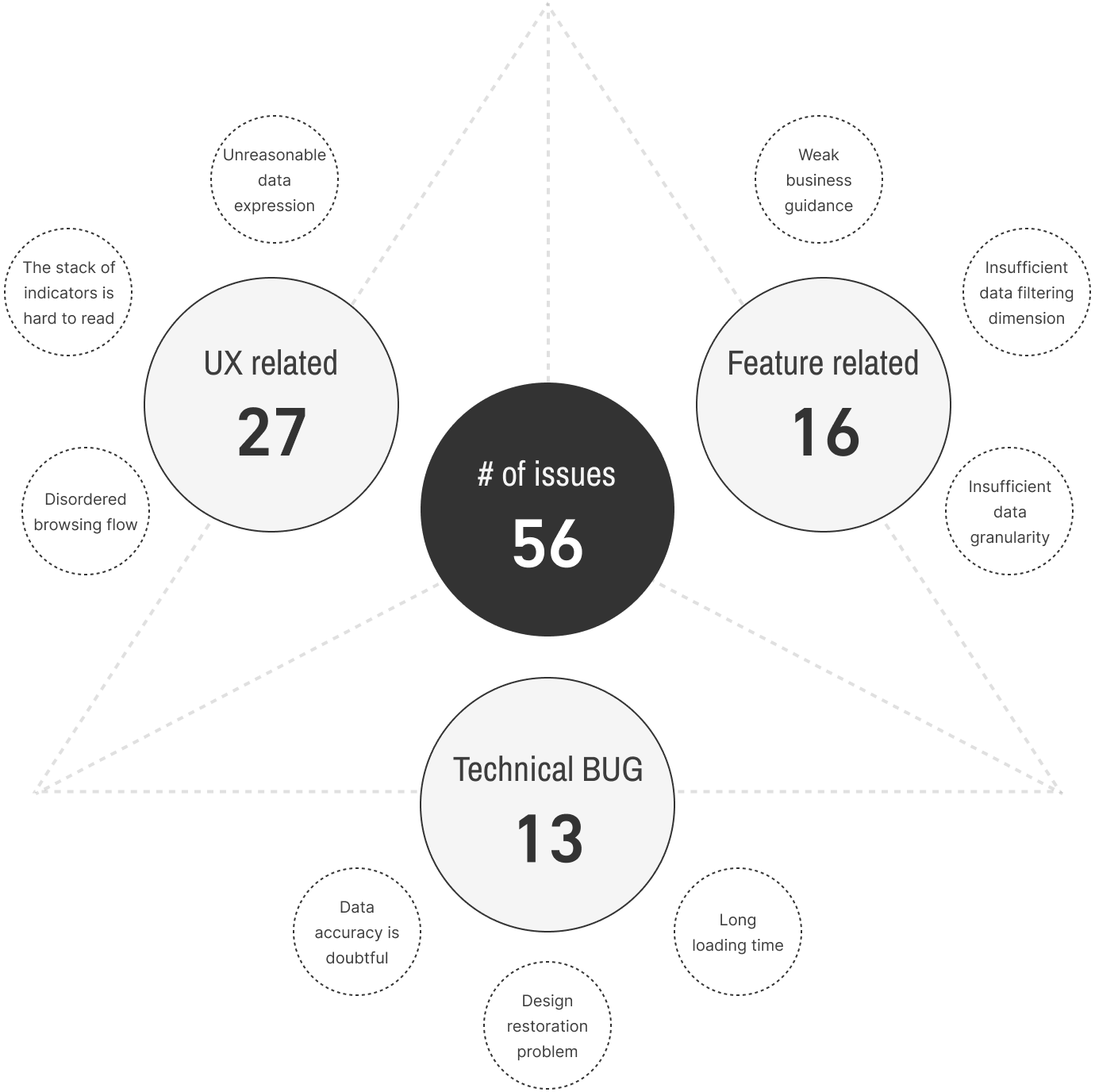
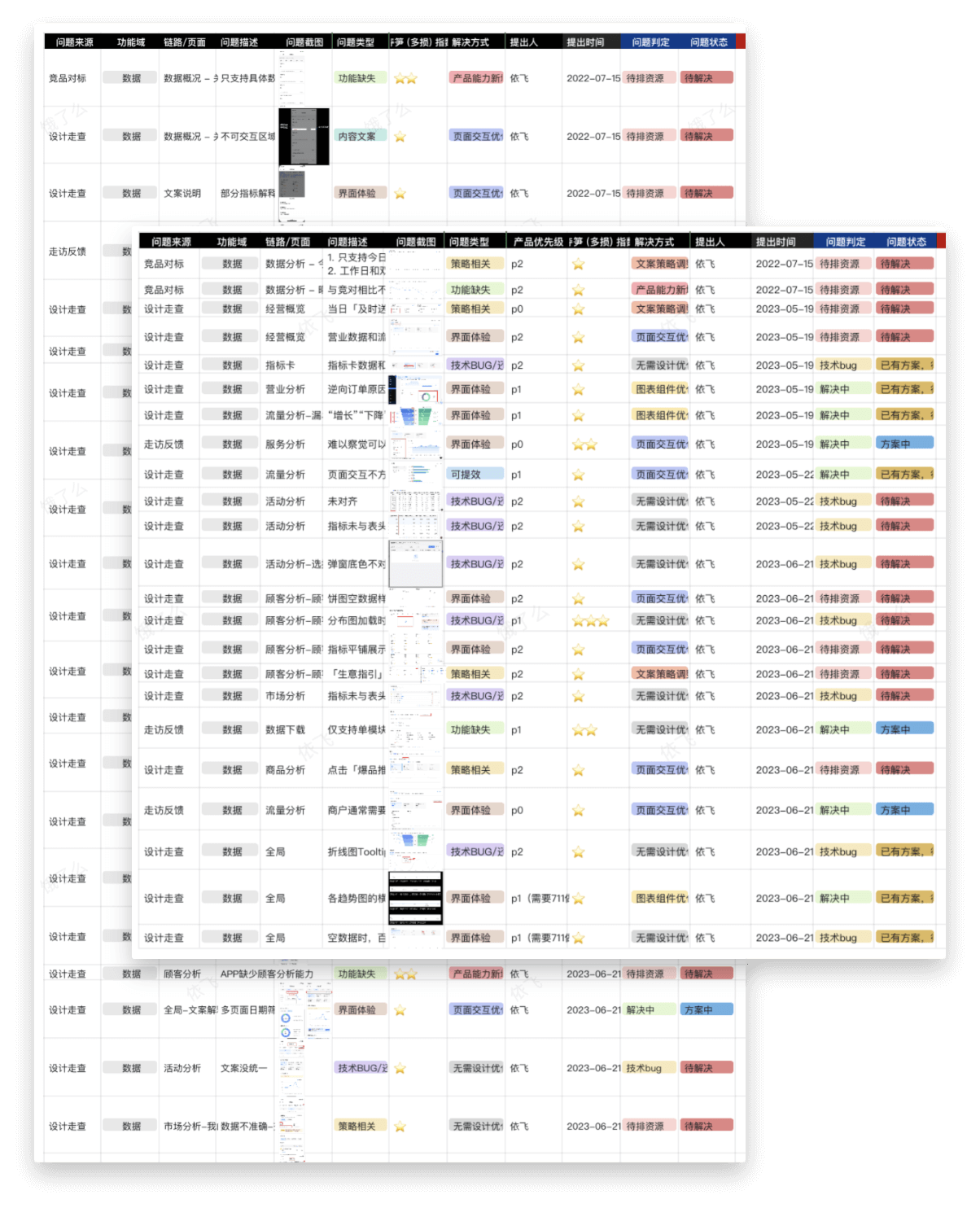
Meituan’s retail merchant side is the main direct competitor to us. In competitive analysis, I compared Meituan’s functionality and experience with Ele.me. After analyzing a total of 32 functions on PC and APP, it was found that 43.7% of the functions and experience lagged behind the competitor.

Compare with the competitor, the biggest problems are:
After sorting out the pain points extracted from the above research methods, the current problems in the data analysis module can be abstractly attributed to incomplete functionalities, incomprehensibility, and lack of business guidance.
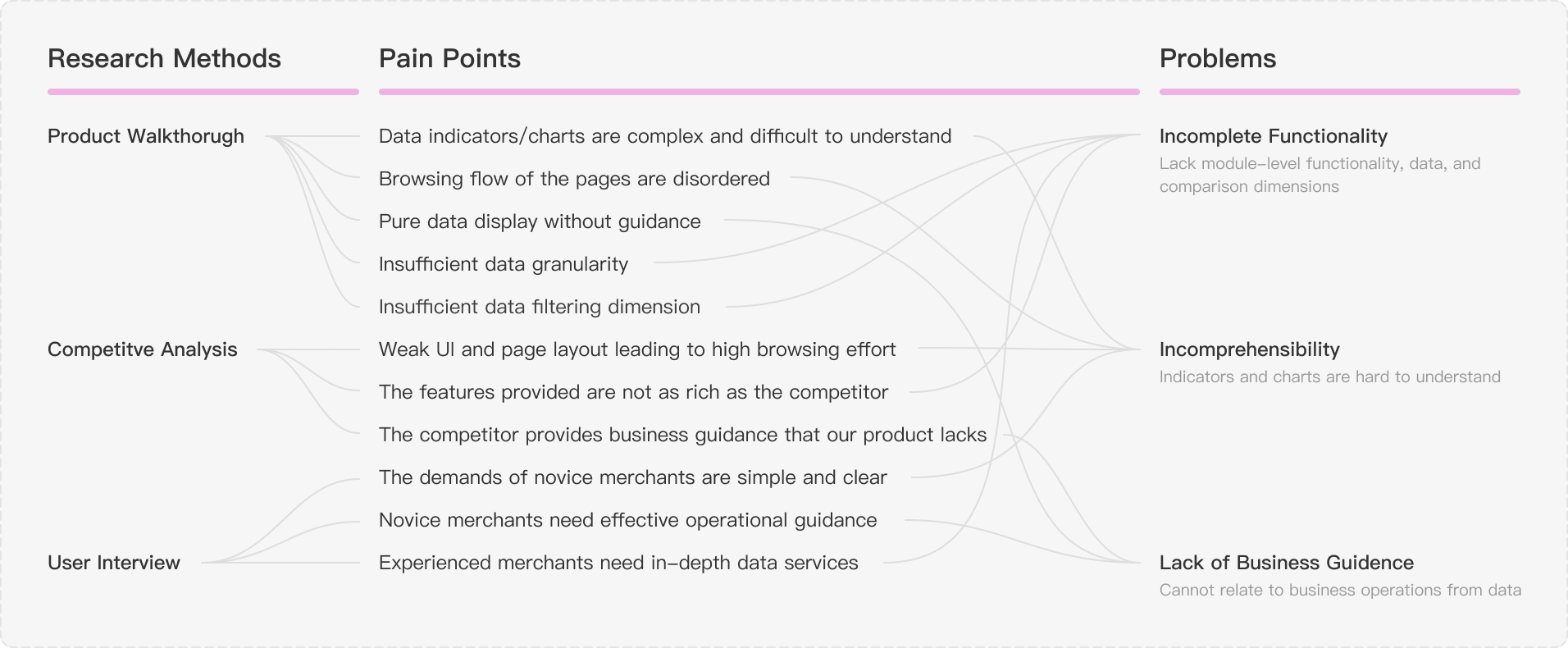

By adding a new PC data homepage, simplifying the APP data homepage, and adding market analysis and download capabilities, we can meet the data usage demands of merchants.
Through unifying data expression, optimizing data visualization, and reasonalizing browsing flow to make the pages simpler and easier to understand, which fits the merchants' background.
Provide business advice based on data conditions, which helps reflect the value of data.
From previous research, I concluded that novice users prefer simple and clear information and are more accustomed to using APPs. As a result, the design of the mobile terminal is simplified to better fit the user context, while the differentiated design also helps ensure accessibility and ease of use on both terminals.

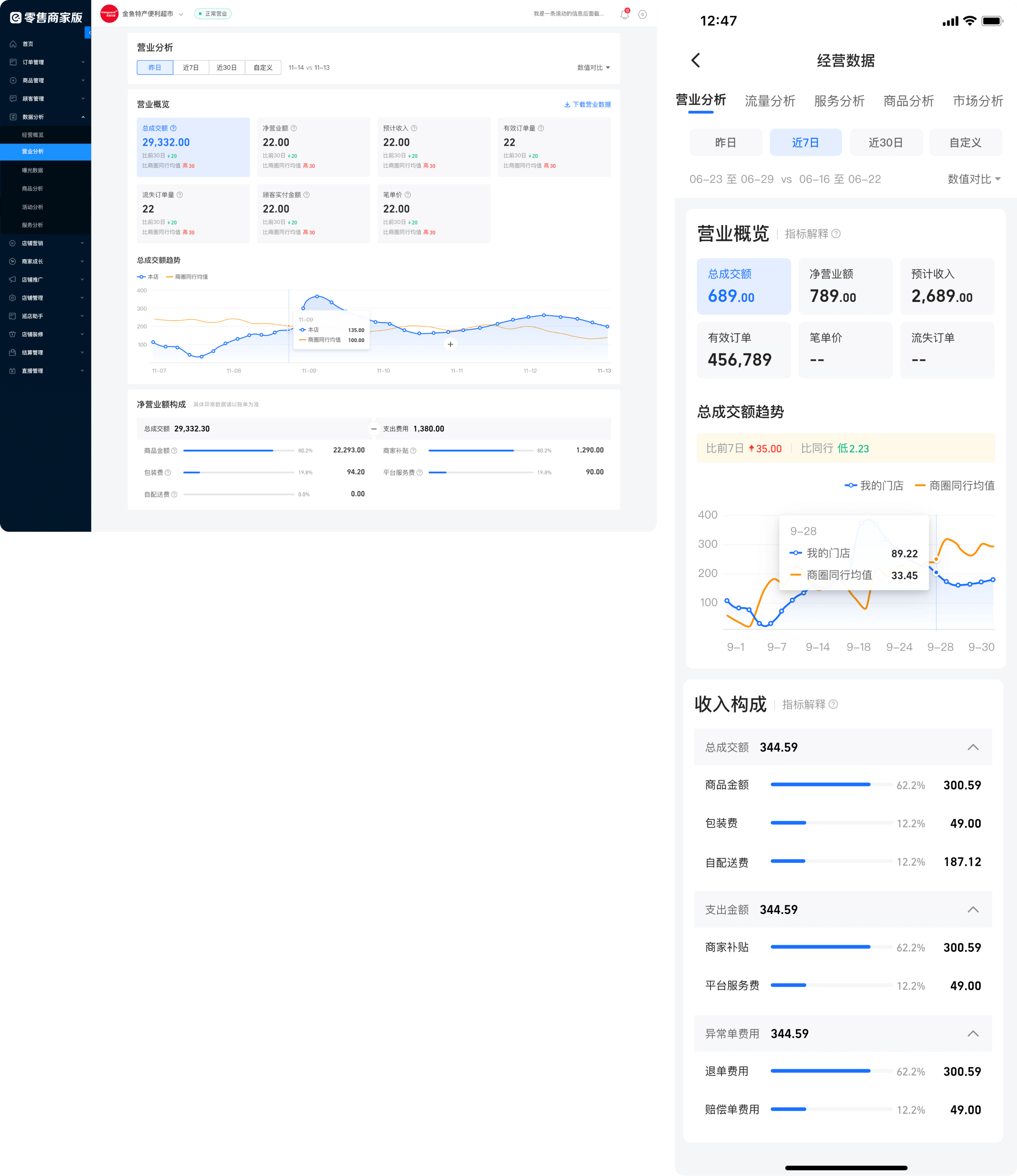

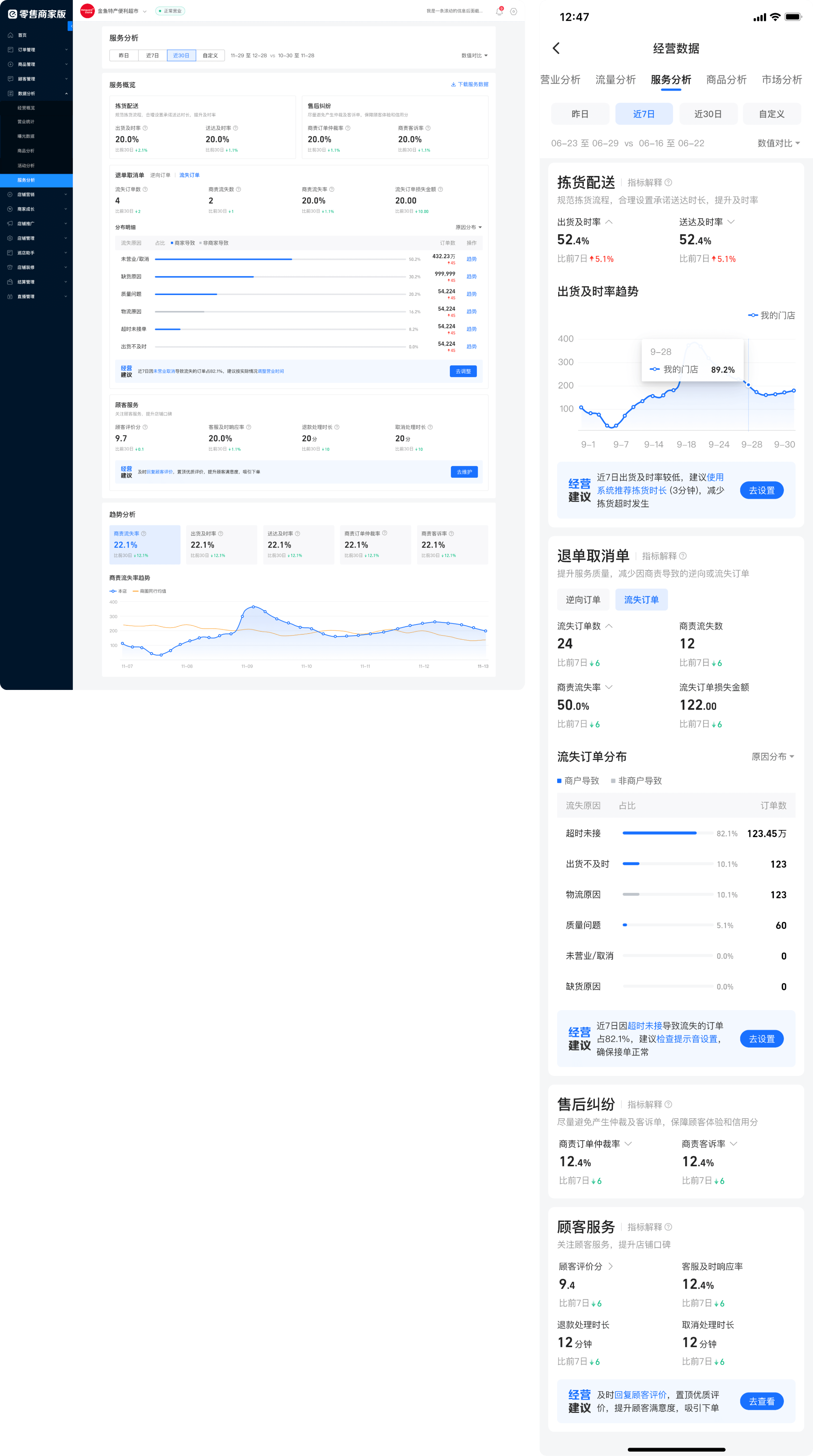
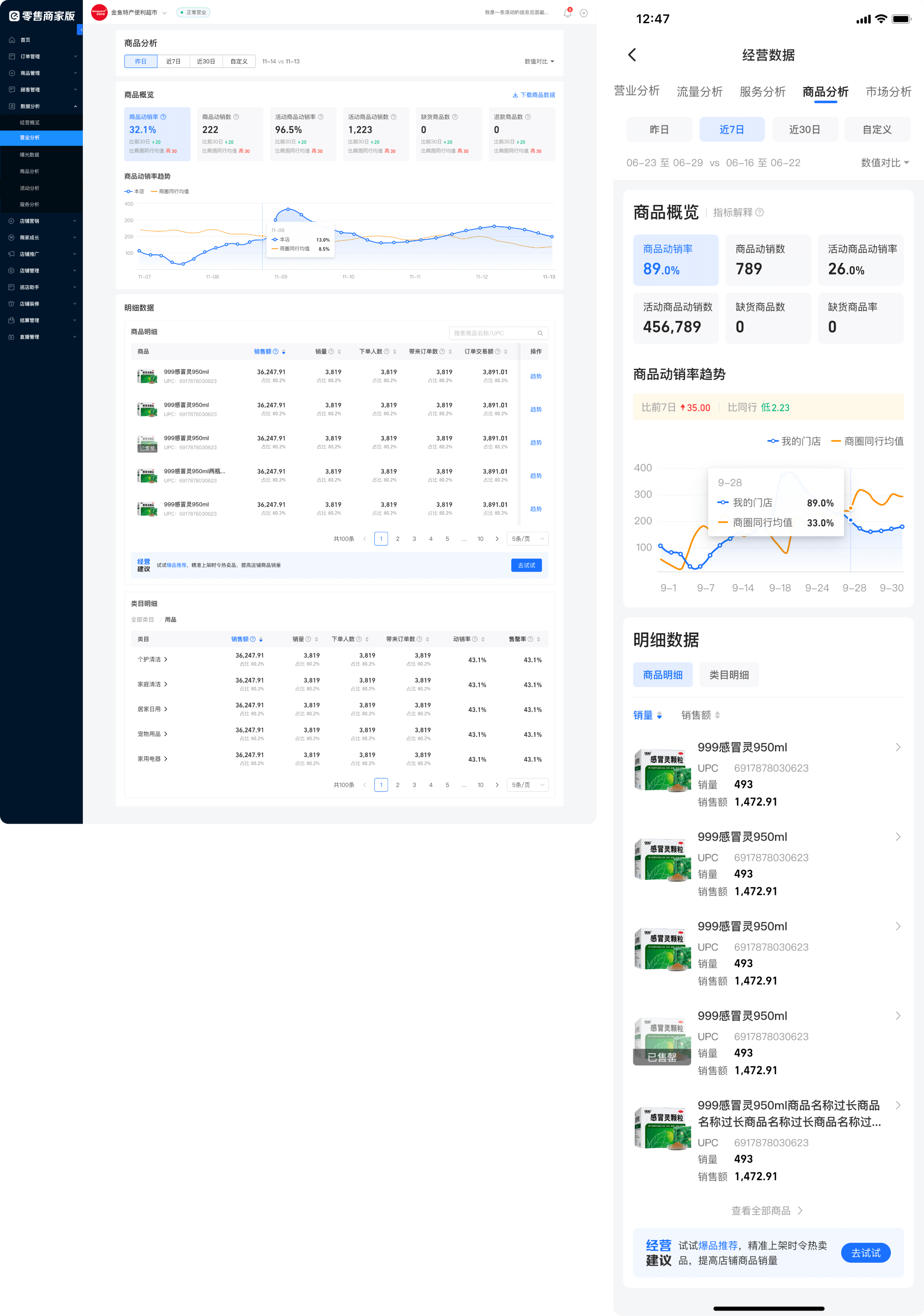
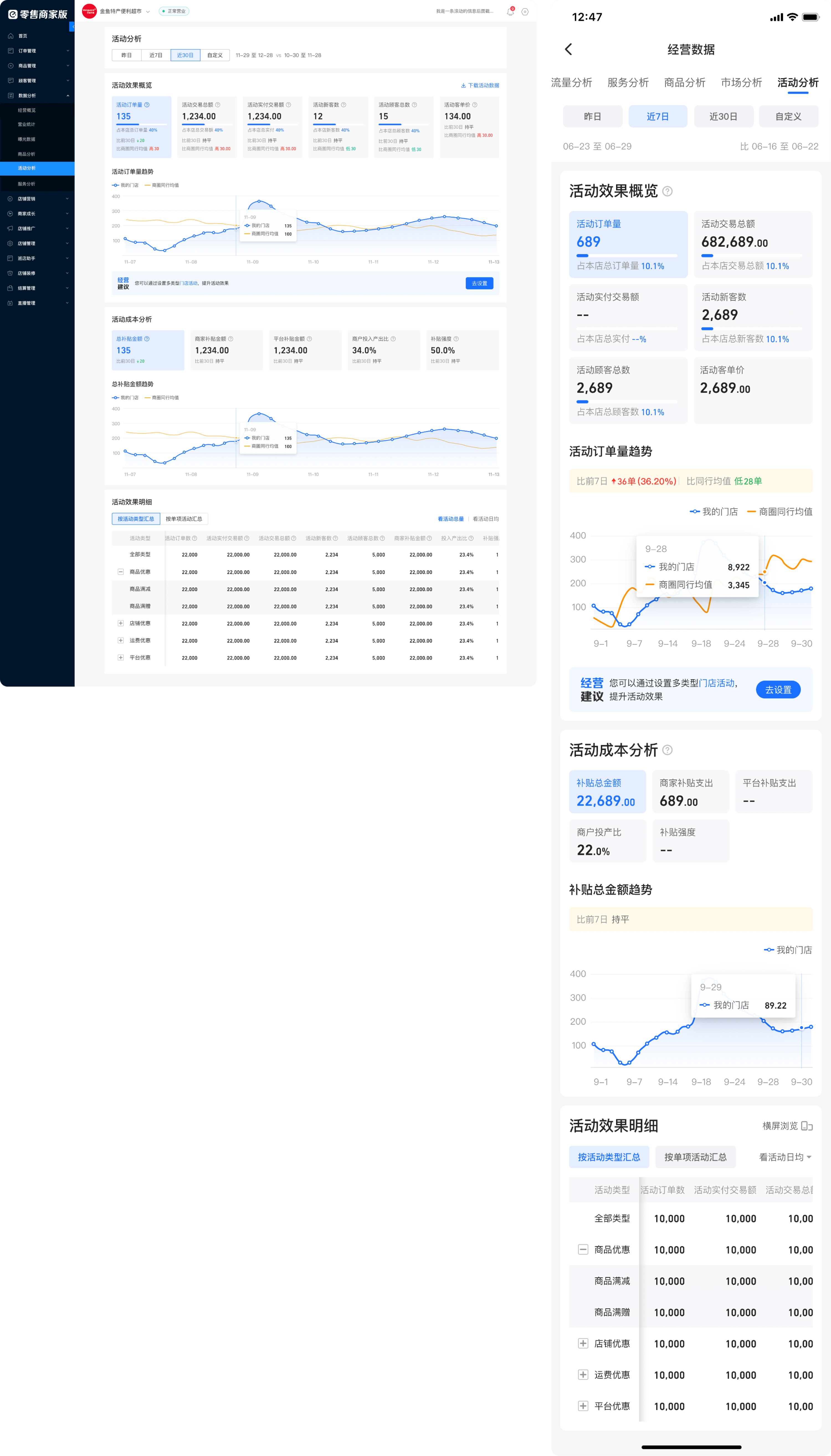
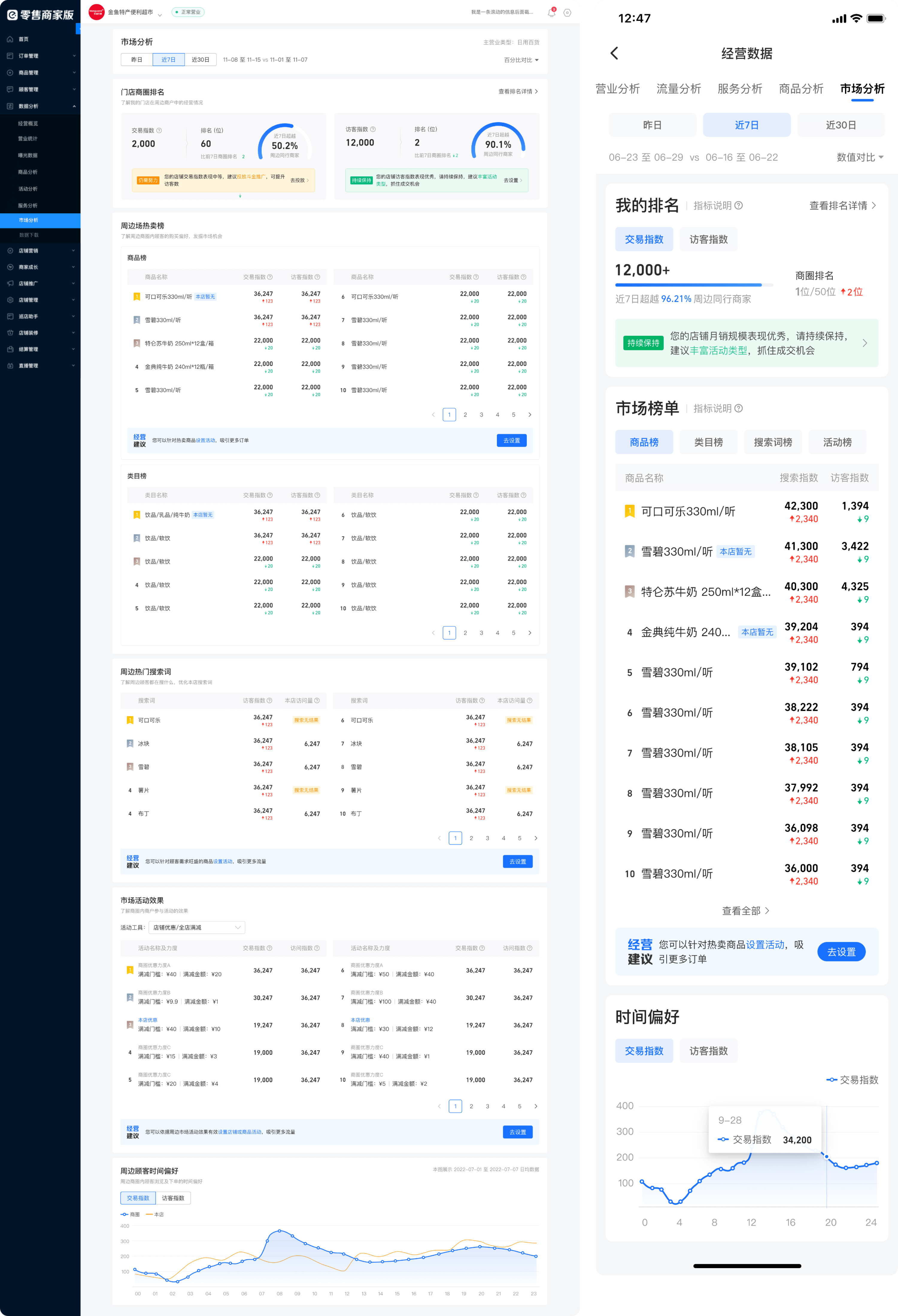

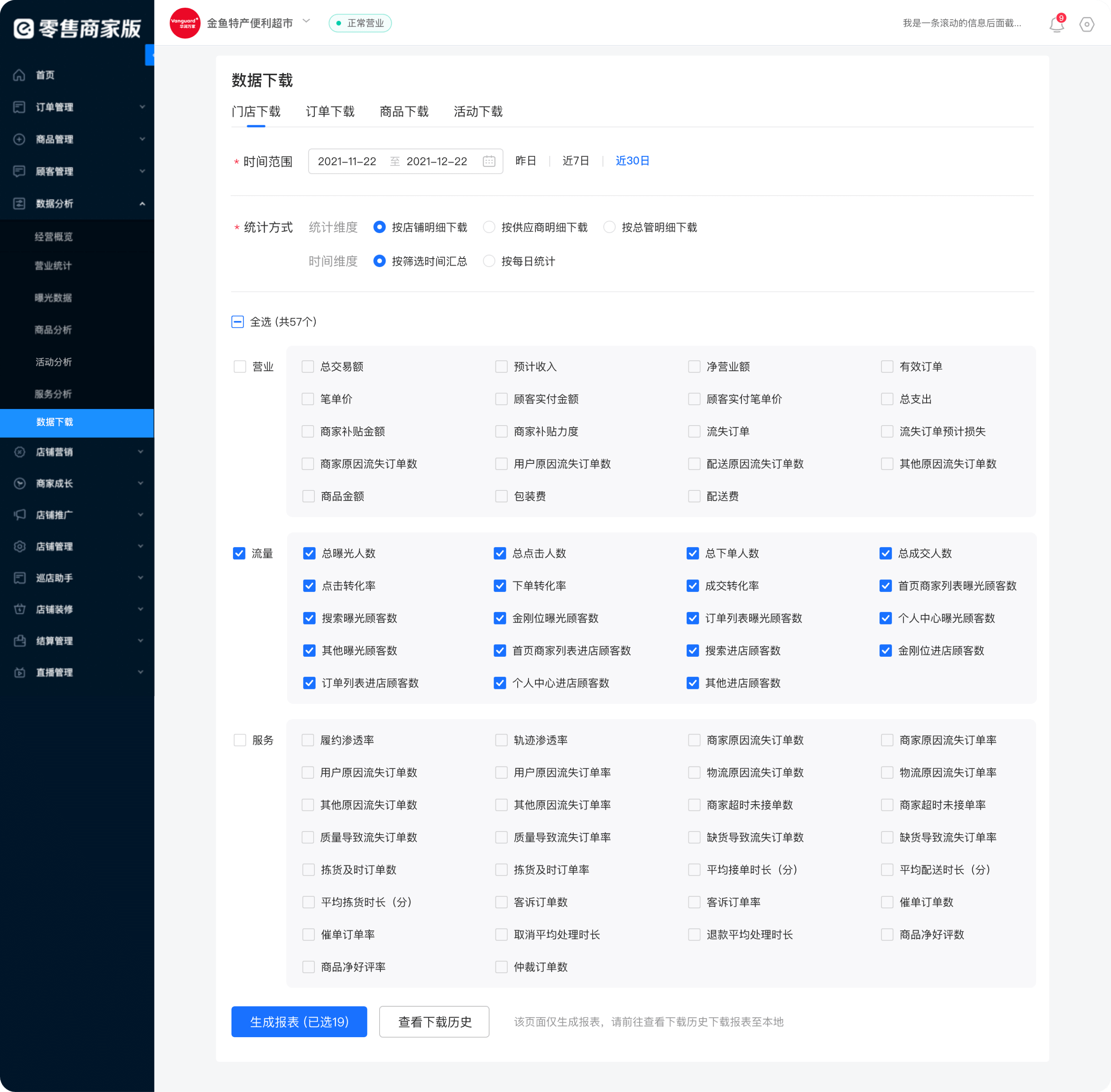
Based on this project, 2 new data components have been abstracted. The components can be reused in a variety of scenarios to ensure product experience consistencys and improve design efficiency.
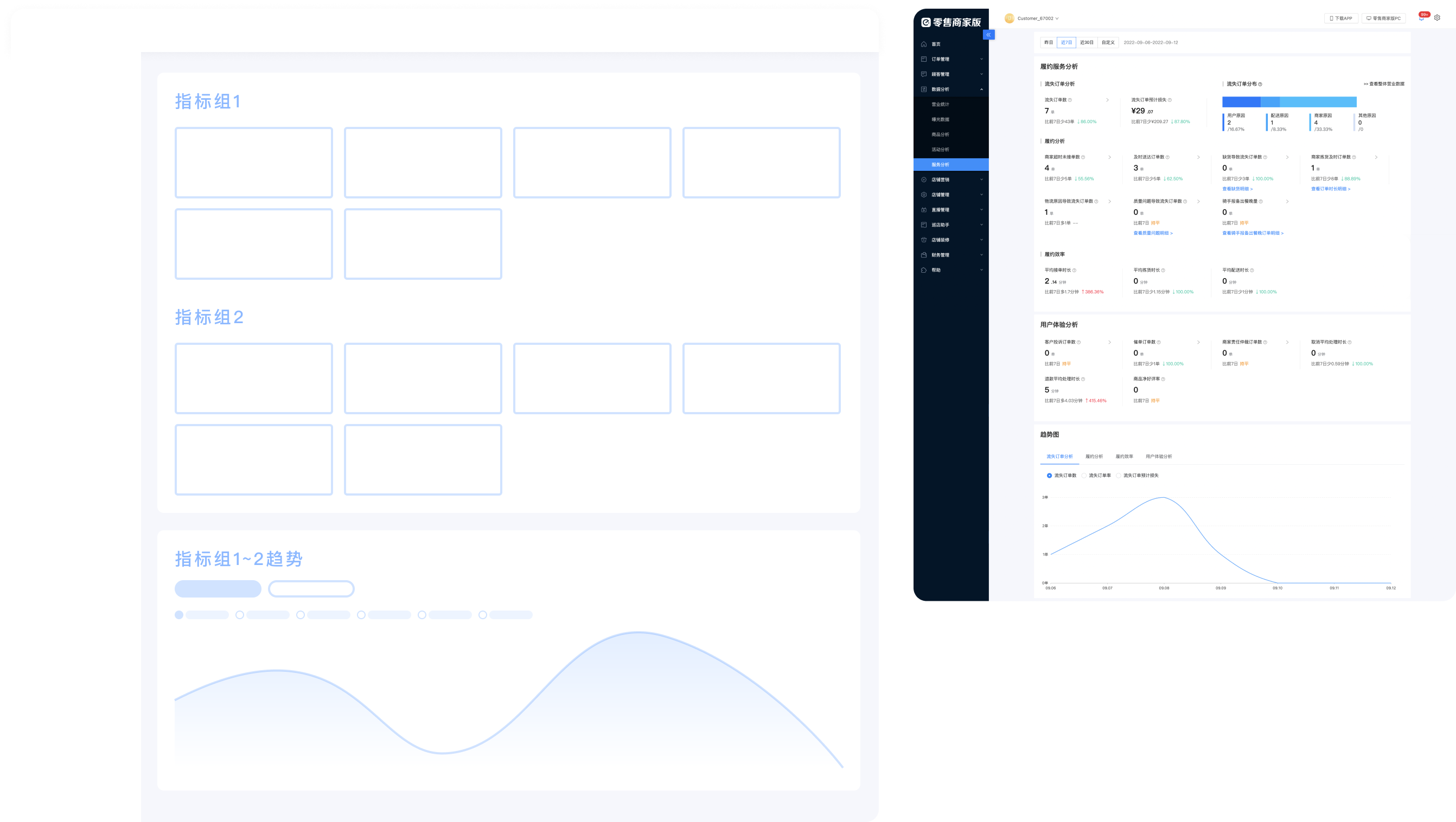
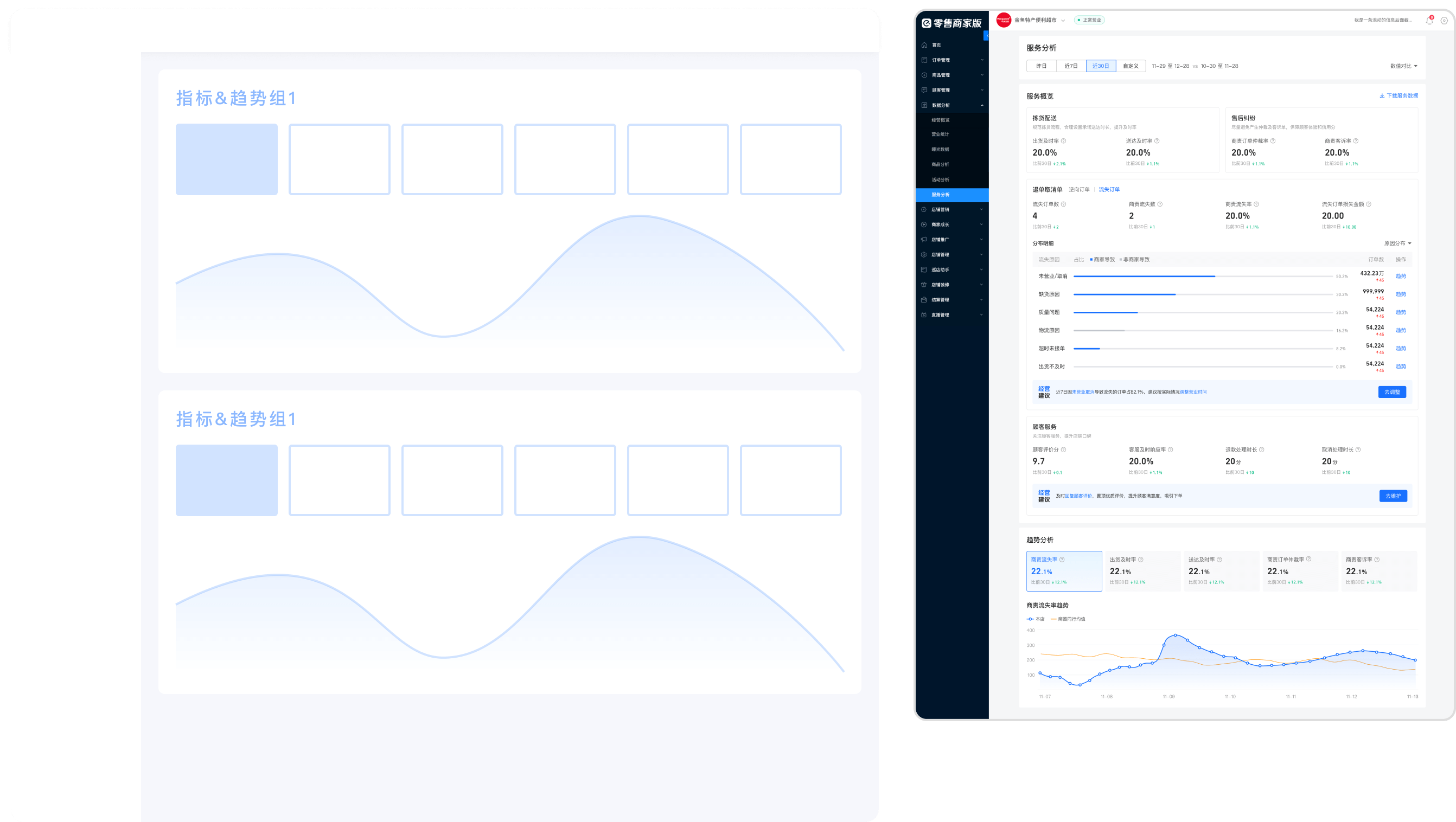
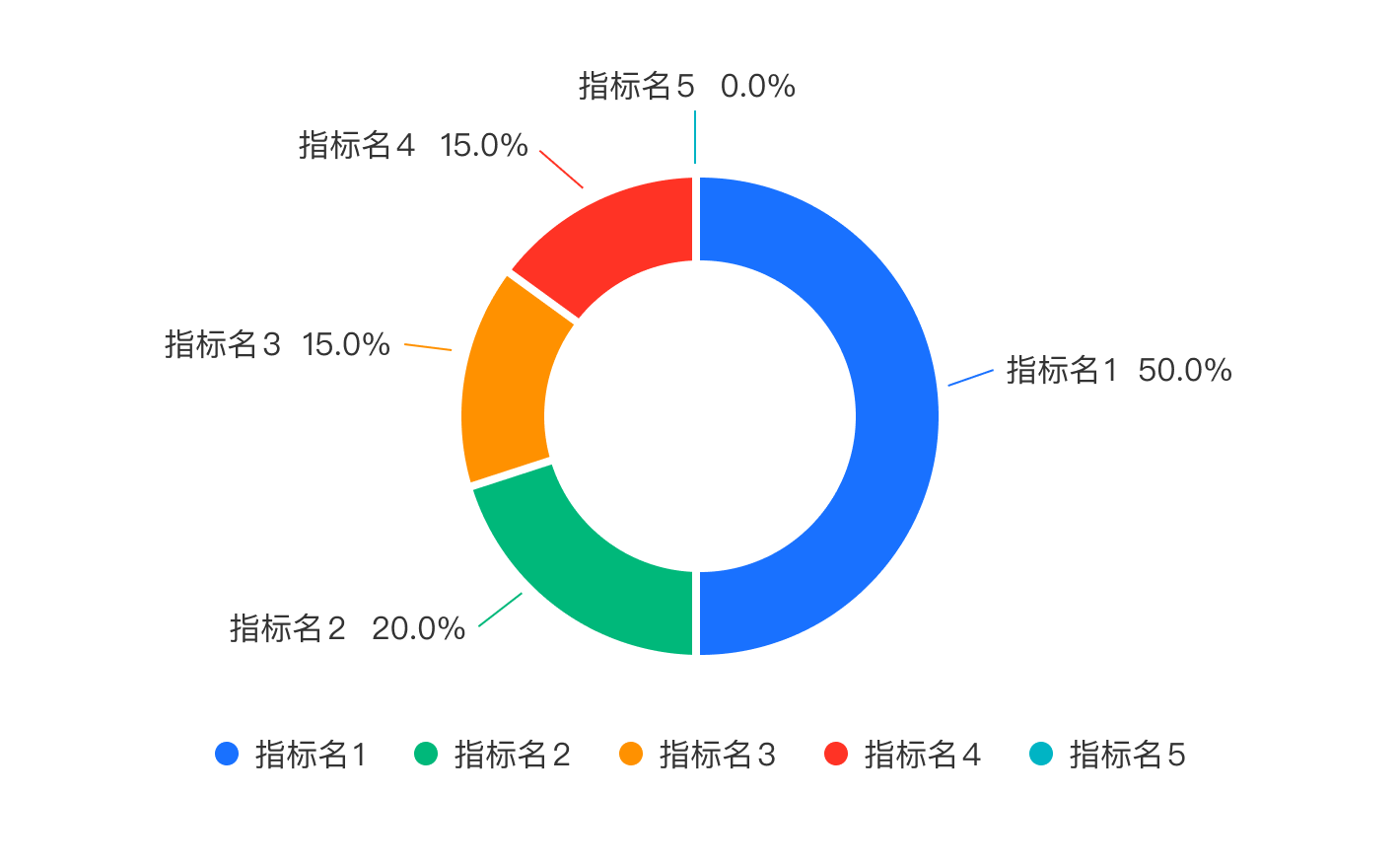
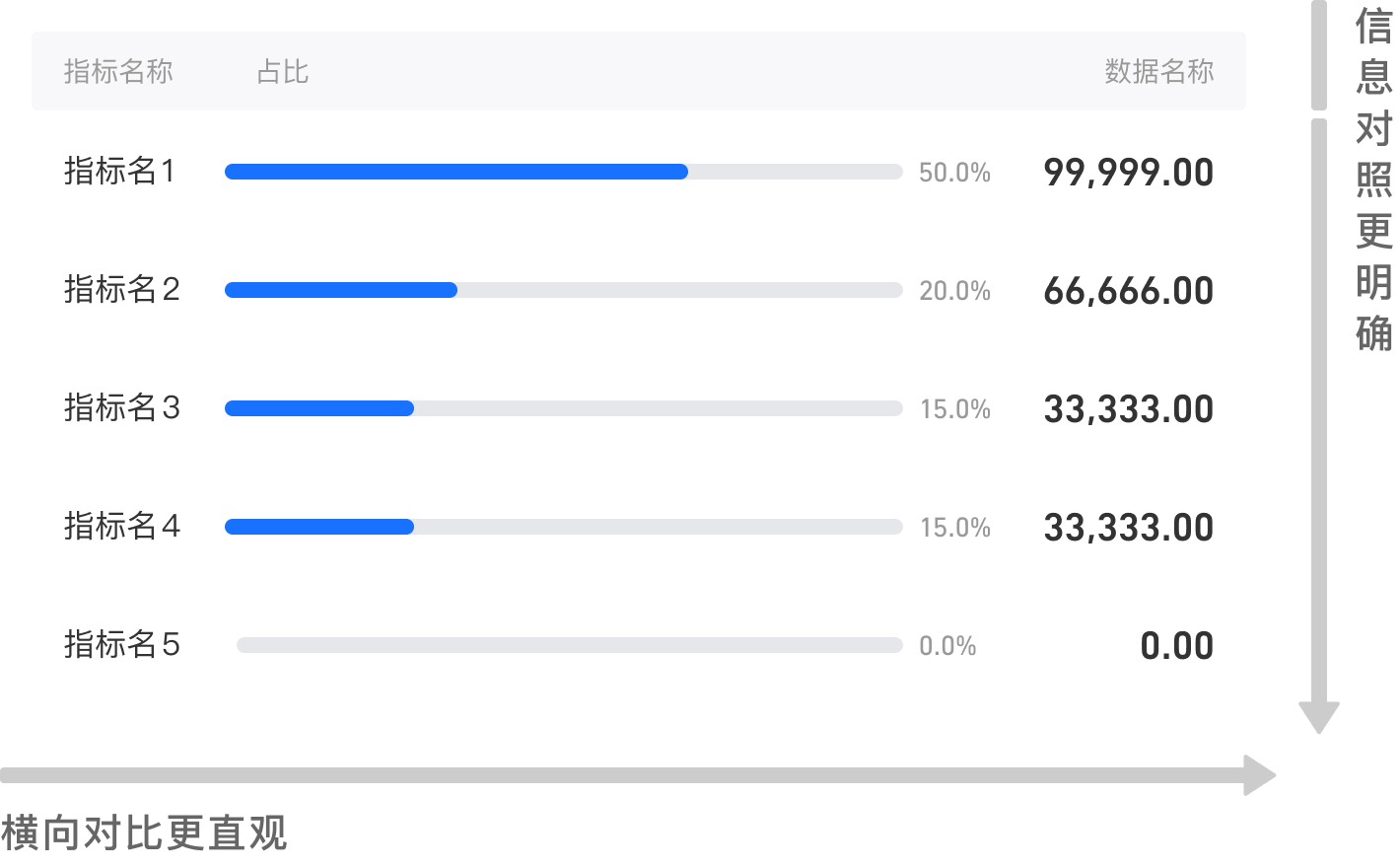
After reviewing the data results after the project was launched, CES score, ux problem resolution rate, and number of problem tickets all showed positive improvements.
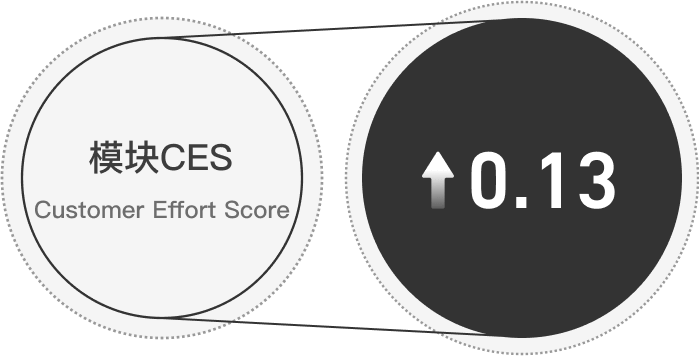
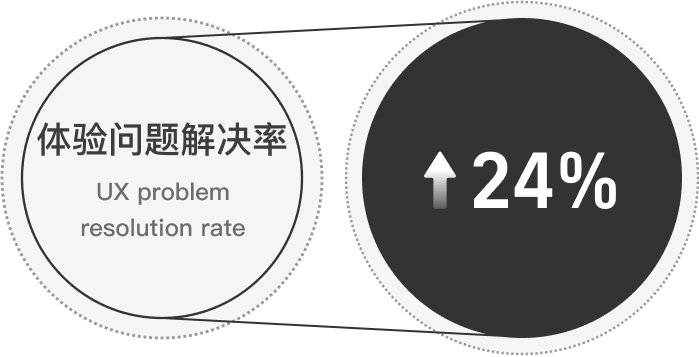
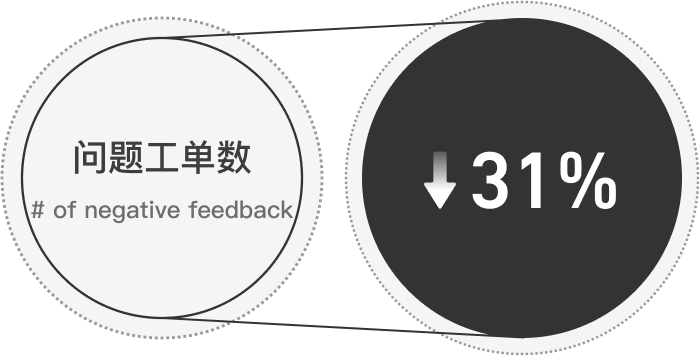
Continue to explore how to make the data analysis module more concise and easy to understand on the APP side. Here are some ideas:
